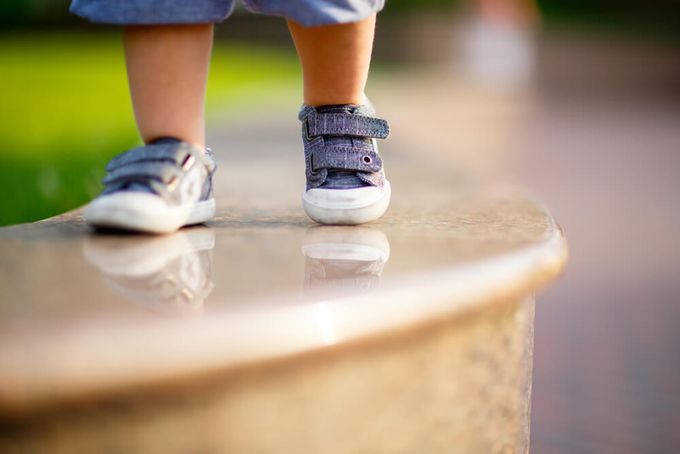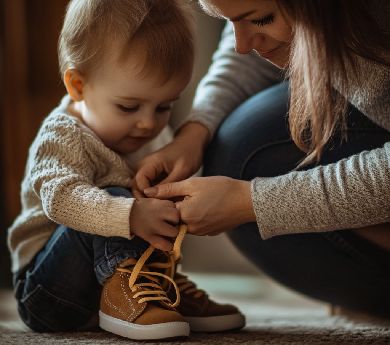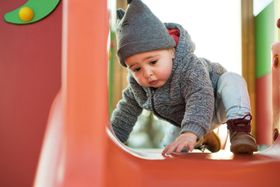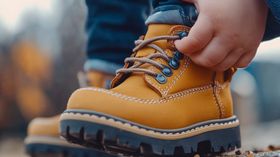Essential Guide to Finding Shoes for Kids with Sensory Issues
This guide helps you find comfortable footwear for kids with sensory sensitivities by explaining what to look for (seamless design, soft materials, adjustable straps) and how to make the transition easier.
Updated October 27, 2025

For kids with sensory issues, the seemingly simple task of putting on shoes can be a daily challenge. Every seam, every material, and every design element plays a crucial role in their comfort and willingness to wear footwear.
This guide explains how to select shoes that support your child's unique sensory needs while promoting comfort with every step.
» Look at orthopaedic shoes for kids with sensory issues
What Are the Signs of Sensory Issues In Kids?
Children with Sensory Processing Disorder (SPD) or sensory sensitivities often show specific reactions to footwear. Watch for these indicators:
- Overreactions: Your kid may react strongly by crying, throwing tantrums, or refusing to wear shoes if the seams, tags, or texture of the shoes cause them sensory issues.
- Discomfort and avoidance: They may avoid activities that involve wearing shoes that cause them sensory issues or complain about pain and irritation.
- Fidgeting and adjustments: Sensory issues might occur if your kid adjusts their shoes often, takes them off and puts them on repeatedly, or moves their feet inside the footwear.
- Inconsistent preferences: Is your little one avoiding constraining footwear one day but looking for a tighter fit the next? They might be experiencing sensory overload.
» Browse the best shoes for your baby's development
A Physiotherapist's Guide: Features That Minimize Sensory Discomfort
When selecting shoes for kids with sensory issues, certain features can significantly enhance comfort and reduce sensory discomfort:
- Adjustable fastening: Velcro straps allow customised fit while providing the stability kids with sensory issues need. They're easier for children to manage independently than laces.
- Seamless design: Eliminating internal seams prevents the skin irritation that quickly triggers sensory overload. Look for shoes with minimal stitching against the foot.
- Breathability: Fabrics that wick moisture are helpful for kids sensitive to heat or sweat.
- Flexibility: Shoes that bend naturally promote better sensory feedback and stability. Rigid soles restrict movement and increase discomfort
- Lightweight design: Reducing shoe weight minimises sensory input, making footwear feel less noticeable. This reduces the constant awareness that overwhelms sensitive children.
» Explore kids' shoes for orthotics and secure your little one's foot health
Recommended First Walkers Styles
First Walkers designs incorporate these sensory-friendly features across our orthopedic collection:
1. Seamless Sandals
Our open-toe styles feature seamless interiors and wide adjustment straps. The breathable design suits children sensitive to heat while providing podiatrist-recommended arch support.
2. Lightweight Sneakers
European-crafted trainers combine flexible soles with soft, breathable uppers. Memory foam insoles adapt to individual foot shapes, vital for children with tactile sensitivities.
3. High-Top Supportive Shoes
For children needing ankle stability, our high-top designs offer secure support without pressure points. Wide toe boxes accommodate natural foot shape while reinforced heel counters prevent overpronation.
How to Pick Sensory Shoes for Kids
1. Understand Your Child's Specific Sensory Needs
Before shopping, identify your child's specific sensory challenges. Some children may have issues related to Sensory Processing Disorder (SPD), while others might use an Ankle-Foot Orthosis (AFO) or have feet of different shapes or sizes.
2. Measure the Feet Accurately
Use a Brannock device, available at most shoe stores, to measure your child's feet accurately. You can also print out a measurement guide and measure your child's feet at home. This ensures you start with the correct size.
3. Choose the Right Materials
Look for shoes made from soft and flexible materials that provide a gentle and comfortable fit. High-quality fabrics, mesh, or supple leather can help reduce irritation and rubbing against the skin.
4. Prioritise Sensor-specific Designs
Look for shoes for kids with autism and SPD that include:
- Soft uppers with seam-free interiors
- • Tongues that open widely for easy insertion
- • Heel counters provide ankle support without creating pressure
- • Lightweight, flexible construction that remains supportive
- • Cushioned insoles and wide toe boxes for natural movement
6. Try Different Brands
Consider trying shoes from brands known for creating sensory-friendly options, such as First Walkers. They are designed with seamless interiors, which reduce tactile discomfort often caused by seams or stitching. If your little one is sensitive to texture, they will reduce irritation.
Plus, the breathable materials help regulate temperature and reduce moisture buildup, which is especially important for kids who are sensitive to heat or sweat. Your little one will feel more pleasant while wearing them.
7. Go for In-Store Testing
If possible, have your child try on the shoes in-store. This allows them to walk around and provide feedback on comfort. Be prepared to have patience, as your child may have complaints about fit and comfort.
8. Consider Desensitization Techniques
If your child is still having difficulties putting on shoes, try desensitizing their feet before shoe-fitting. Massage their feet or use a vibrating massager to help reduce sensitivity to touch.
9. Use Seamless Socks
Pair the shoes with soft, seamless socks to further enhance comfort and reduce potential irritation.
10. Gradually Increase Wear Time
Once you've found a suitable pair of shoes, introduce them gradually. Start with short periods and slowly increase the duration as your kid becomes more comfortable. Use positive reinforcement to encourage progress.
Remember, finding the right shoes may take time and patience. Be prepared to try multiple options and listen to your child's feedback in the process.
» Check out the best shoes for kids just learning how to walk
Challenges When Picking Sensory Shoes
Finding the right shoes for children with sensory issues can present several obstacles, but there are practical solutions to address these challenges:
- Affordability: Explore special offers, discounts, financial support options, and community resources for affordable options.
- Limited availability: Look for specialised shoe stores, online retailers, or direct contact with shoe companies.
- Finding the right size: Use size charts, consult experts, and consider companies offering custom sizing options.
- Resistance: Try gradual exposure, create positive associations with the shoes, and involve kids in decision-making to ease the transition. Make it fun by playing games and telling stories.
Tip: Let your child try different pairs in-store, feel the materials, and walk around to find what feels comfortable. You can also talk about the benefits of sensory-friendly shoes while exploring their preferences for style, colour, and closure type.
» Discover supportive toddler sandals & sneakers for worry-free walks
Stepping up Comfort for Sensory Needs
Finding the perfect shoes is a collaborative journey between you and your kid. Be patient, listen to their feedback, and celebrate every step towards a comfortable fit. Remember, happy feet make for happy adventures.
For those seeking tailored solutions, consider FirstWalkers' orthopedic shoe line, designed with sensory-sensitive toddlers in mind. Their seamless interiors and breathable fabrics reduce tactile discomfort, while flexible soles enhance sensory feedback for a more pleasant walking experience.
Disclaimer: First Walkers' information is intended for educational and informational purposes related to toddler footwear and feet. We encourage you to consider individual circumstances and consult qualified orthopaedists about specific conditions.
FAQs
What are the best shoes for kids with autism?
Shoes for kids with autism should feature seamless interiors, adjustable closures, and breathable materials. Look for lightweight designs with minimal sensory input. First Walkers' orthopaedic collection specifically addresses these needs with European-crafted designs developed in consultation with paediatric specialists.
How do I know if my child has sensory issues with shoes?
Watch for consistent refusal to wear shoes, complaints about seams or tightness, constant fidgeting with footwear, or emotional reactions to putting on shoes. If your child removes shoes immediately after putting them on or shows distress around footwear, sensory sensitivities may be involved.
Can sensory-friendly shoes help with SPD?
While shoes alone don't treat Sensory Processing Disorder, appropriate footwear significantly reduces daily stress and improves compliance. Shoes designed for sensory needs eliminate common triggers like seams, pressure points, and temperature discomfort.








